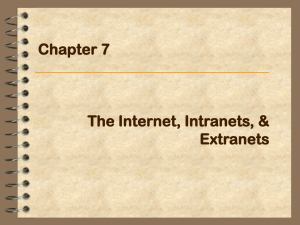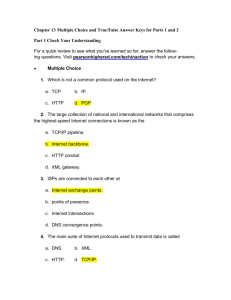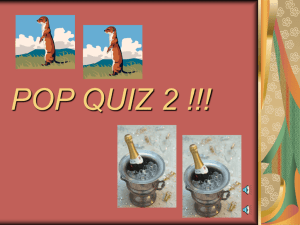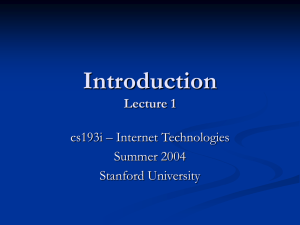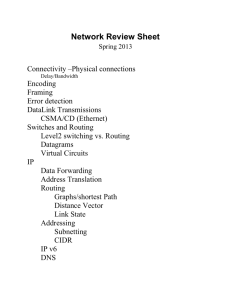Test 3 Study Guide
advertisement
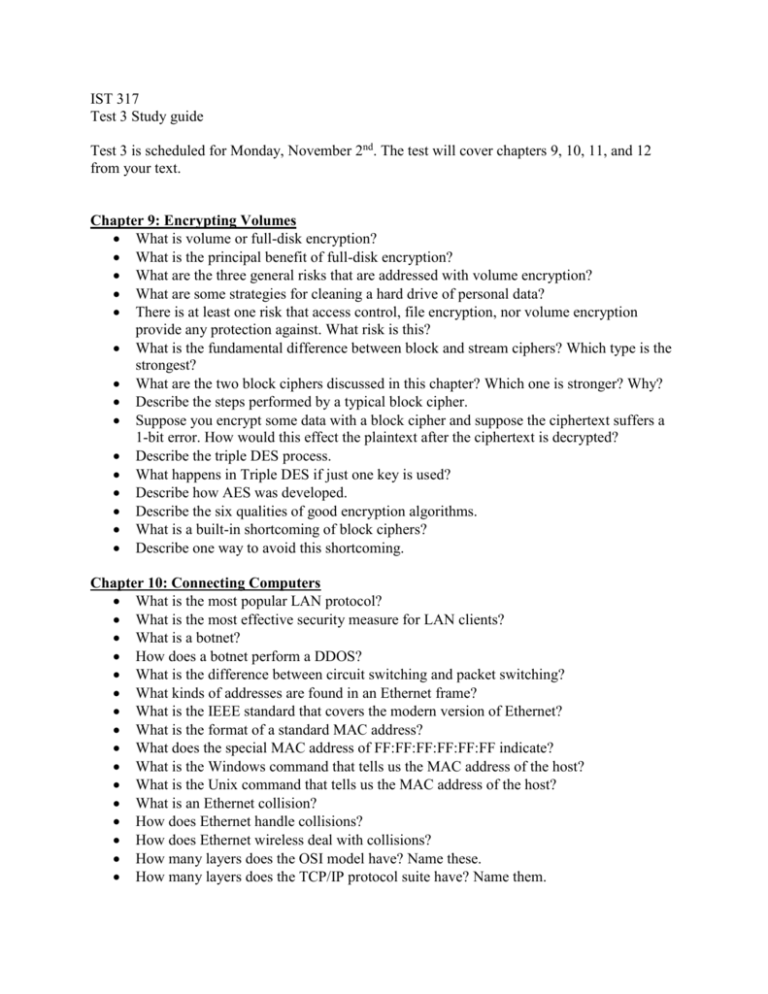
IST 317 Test 3 Study guide Test 3 is scheduled for Monday, November 2nd. The test will cover chapters 9, 10, 11, and 12 from your text. Chapter 9: Encrypting Volumes What is volume or full-disk encryption? What is the principal benefit of full-disk encryption? What are the three general risks that are addressed with volume encryption? What are some strategies for cleaning a hard drive of personal data? There is at least one risk that access control, file encryption, nor volume encryption provide any protection against. What risk is this? What is the fundamental difference between block and stream ciphers? Which type is the strongest? What are the two block ciphers discussed in this chapter? Which one is stronger? Why? Describe the steps performed by a typical block cipher. Suppose you encrypt some data with a block cipher and suppose the ciphertext suffers a 1-bit error. How would this effect the plaintext after the ciphertext is decrypted? Describe the triple DES process. What happens in Triple DES if just one key is used? Describe how AES was developed. Describe the six qualities of good encryption algorithms. What is a built-in shortcoming of block ciphers? Describe one way to avoid this shortcoming. Chapter 10: Connecting Computers What is the most popular LAN protocol? What is the most effective security measure for LAN clients? What is a botnet? How does a botnet perform a DDOS? What is the difference between circuit switching and packet switching? What kinds of addresses are found in an Ethernet frame? What is the IEEE standard that covers the modern version of Ethernet? What is the format of a standard MAC address? What does the special MAC address of FF:FF:FF:FF:FF:FF indicate? What is the Windows command that tells us the MAC address of the host? What is the Unix command that tells us the MAC address of the host? What is an Ethernet collision? How does Ethernet handle collisions? How does Ethernet wireless deal with collisions? How many layers does the OSI model have? Name these. How many layers does the TCP/IP protocol suite have? Name them. Chapter 11: Networks of Networks Describe the star network. Benefits? Shortcomings? Describe the bus network. Benefits? Shortcomings? Describe the tree network. Benefits? Shortcomings? Describe the mesh network. Benefits? Shortcomings? If a packet travels from one LAN to another, what addresses change? What addresses remain the same? What does a socket address consist of? What does this address identify? What is the purpose of the TTL field in the IP packet? What is the purpose of the fragment field in the IP packet? What device is responsible for breaking a packet into small size units if necessary? Describe the ARP protocol. What is the purpose of a network mask? What is the format of a general network mask? What is a private IP address? Where is this used? Most homes connect to their ISP through a gateway router. What are three important functions performed by this router? What does DHCP do? What does NAT do? What does the wireshark program do? Chapter 12: End-to-End Networking What is the purpose of UDP? What is the purpose of TCP? Explain this statement: “TCP and UDP are purely end-to-end protocols”. What type addresses are found in a TCP header? Explain the three-way handshaking that takes place in establishing a TCP connection. What is ICMP? What is a ping flood? What is a smurf attack? What is a ping of death? What is a SYN flood attack? What is a source routing attack? What is an IP spoofing attack? What does DNS do? What does the nslookup command do? What is cache poisoning? What is a DOS attack on a DNS server? What is a DNS-based amplification attack?

